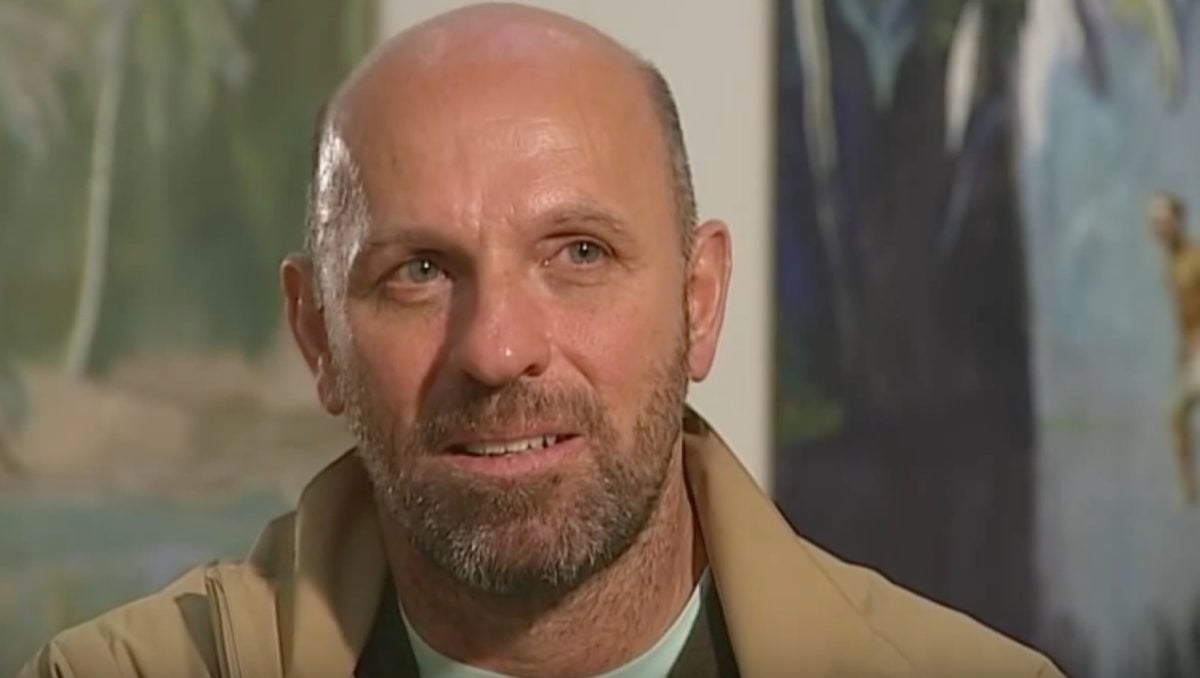
Peter Doig has taken the stand on Monday on the first day of the much discussed lawsuit brought against him by Robert Fletcher, a former corrections officer who claims Doig sold him the painting for $100 while on parole, and art dealer Peter Bartlow.
Called as an adverse witness by the plaintiffs, Doig politely talked about the techniques he uses in his work, describing how he uses projections and also how he would make a silkscreen printed t-shirt, the New York Times reports. He did not address directly the question of whether he had painted the work in question or not.
The case, which has been going on for five years, requires Doig to prove that he didn’t paint the desert landscape in question. Fletcher, owner of the disputed painting, and the Chicago-based art dealer Bartlow are seeking both damages to the tune of at least $5 million and for Doig to authenticate the work. Doig, however, denies that he made the painting and refuses to authenticate it.
The painting in question depicts a desert landscape. Photo: ARIS Title @ARIS_ArgoGroup via Twitter.
The plaintiffs say that Doig prevented them from selling the work at auction in Chicago by refusing to authenticate the painting, and that the sale could have made them millions.
William F. Zieske, the lawyer for the plaintiffs, gave an opening statement claiming he would prove the work was indeed painted by Doig, according to the New York Times. He then had the work brought out and presented to the court.
“This is not a work painted by someone with no artistry or no artistic talent,” Zieske said. “It is a work of master artistic talent.”
The work in question, signed Pete Doige ’76, would have been painted when Scottish artist Doig was a living in Canada as a teenager, with his parents. Fletcher claims that he knew Doig when he was studying at Lakehead University in Ontario, Canada, during the 1970s and was later Doig’s parole officer, and Doig then allegedly sold him the painting in return for finding him work.
Doig says he was 16 or 17 at the time and has never been incarcerated. The plaintiffs are focusing on the fact that Doig does not, apparently, have hard evidence of his whereabouts during his teenage years in Canada, where he lived until returning to the UK to study art at London’s Wimbledon College in 1979.
In addition to this, the sister of a Peter Edward Doige, who died in 2012, says he painted as a hobby and did spend time at Thunder Bay correctional facility in the 1970s.
Meanwhile, Matthew S. Dontzin, Doig’s lawyer, argued that the artist had been put through a series of extreme “bullying tactics” and demands for money by the plaintiffs, who according to him “have not produced any documents or one witness to show that Doig painted this or Doig didn’t,” the Times reports.
Doig’s paintings sell for an average of $10 million, and according to the artnet Price Database his auction record, set at Christie’s New York in 2015 stands at $25.9 million for his work Swamped (1990). It is thought that the testimony in this case will last until the end of the week.
There is concern in the art world that a finding in favor of the plaintiffs will open the door to giving those other than living artists the final say on authenticating their own works.